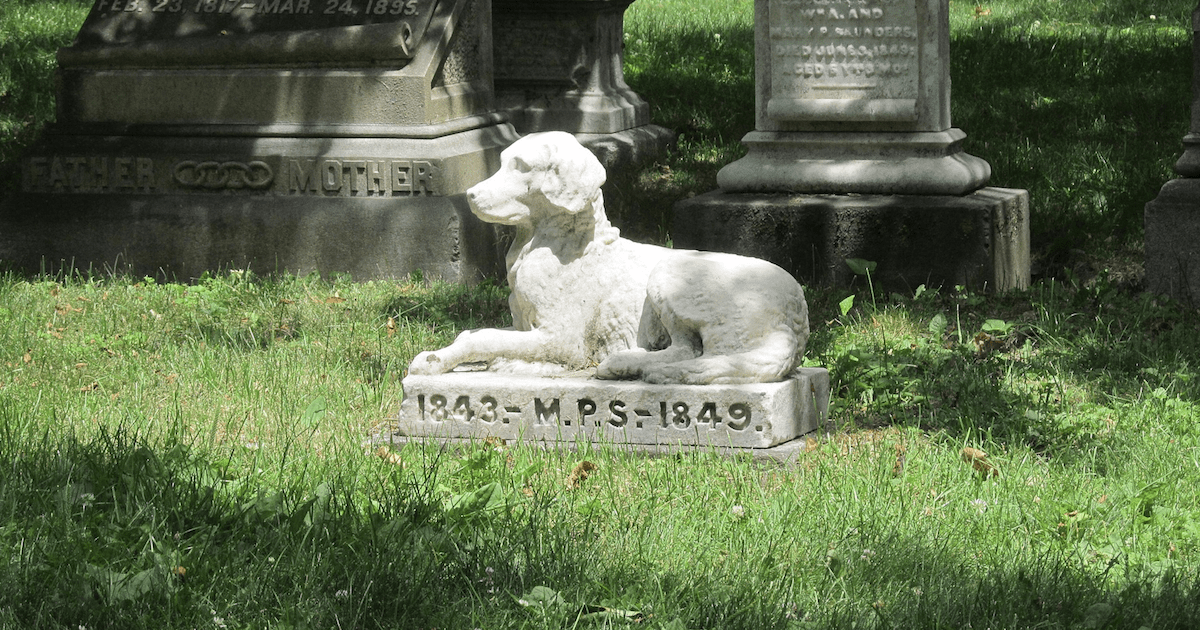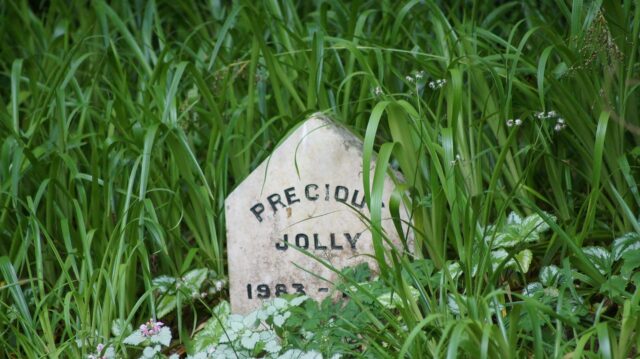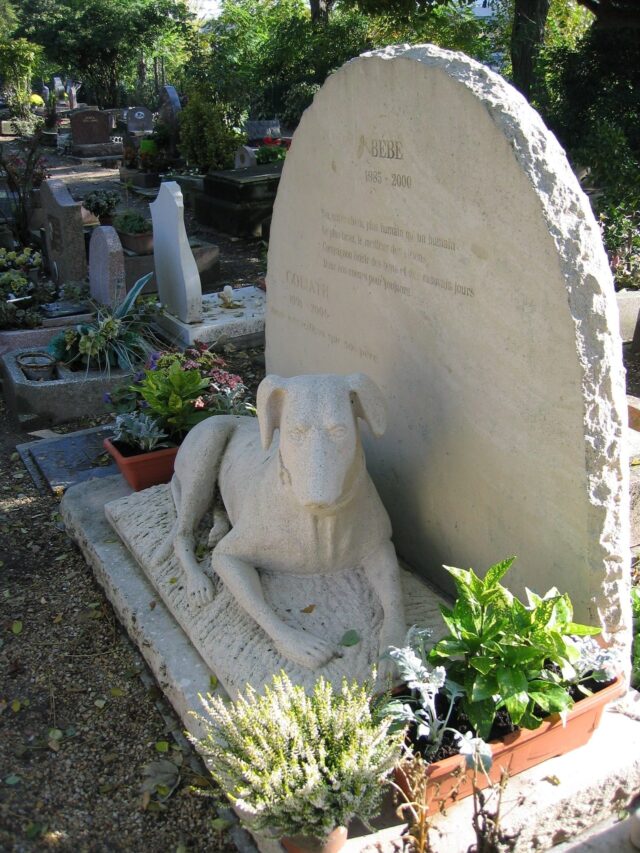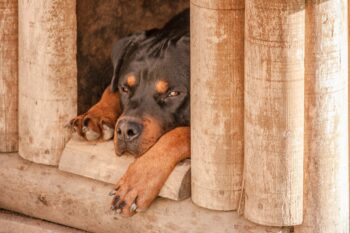
Today, we consider our dogs to be our best friends, our furry children, and our beloved family members. We often give them as much love and respect as we’d give our human friends and family, oftentimes more. So, it’s interesting to look at the past to see a time when dogs weren’t as cherished.
Even though dogs and cats have been companions to humans for ages, it wasn’t until around World War II that they finally became full-fledged family members. A recent study came to this conclusion after comparing today’s dog burials with the dog burials of the past. As it turns out, dogs have come a long way in that time.

The History of Dog Gravestones
In 1881, the first public cemetery made for animals was created in Hyde Park, London. At the time, having a proper burial for your dog or cat was unheard of, even though dogs were already kept as companions by many. But today, lots of dog parents have an extravagant burial for their deceased dogs and cats, and some even request to have them buried near the rest of the family. So, researchers decided to investigate how these bonds between humans and animals came to be.
They studied over 1,000 pet gravestones, looking specifically at the ones from 1881 to 1991. Before 1881, people simply disposed of their pets’ bodies in any way they could. Some buried their pets in the backyard, but others would even throw the bodies into the river or sell them for skin and meat. But soon, people learned that their dogs deserved better. As more gravestones popped up, dogs received more respect.

The earliest pet gravestones were simple, so they only featured a name and a date. But after World War II is when researchers noticed a significant change. The years following the war soon had more personalized gravestones. Some gravestones mentioned the dog’s humans, referring to them as “mummy” or “daddy.” Others even explicitly stated that these dogs and cats were family members. Many of the gravestones also included the dog’s last name, proving that they were true family members.
Becoming Beloved Family Members
After taking a closer look at pet gravestones over the years, researchers put together some statistics to show how the family roles of dogs evolved. Before 1910, less than 1% of the gravestones observed referred to the dog as a family member. Only about 1% used last names for the dogs during that time as well. However, after the war, those numbers skyrocketed.
After the war, 20% of the animal graves referred to them as family members. Also, 11% of them had last names listed. There were also significantly more cat graves as time went on.

These changes likely occurred because more pet products were created. More people were keeping their animals inside thanks to items like flea shampoo and kitty litter. Families were often smaller in the later years too, which gave them more opportunities to spend quality time with their dogs and cats. Soon, dogs were bringing joy to everyone, just like they should.
“I often found people casually walking among the gravestones to pause and give their time to animals they never met,” said Eric Tourigny, the author of the study. “It struck me that pet cemeteries are emotional spaces — not only for those who buried their animals there long ago, but also for those currently cherishing their time with pets.”
Dogs haven’t always been known as the loving family members that they are today, but every year, they seem to become more and more cherished. Gravestones might tell us a lot about the history of dogs, but we don’t need any proof to know that our own dogs are important family members in the present day.

H/T: sciencemag.org
The post Gravestones Reveal That Dogs Became True Family Members After World War II appeared first on iHeartDogs.com.
from iHeartDogs.com https://ift.tt/3eu55wc https://ift.tt/3jZzio0

No comments:
Post a Comment